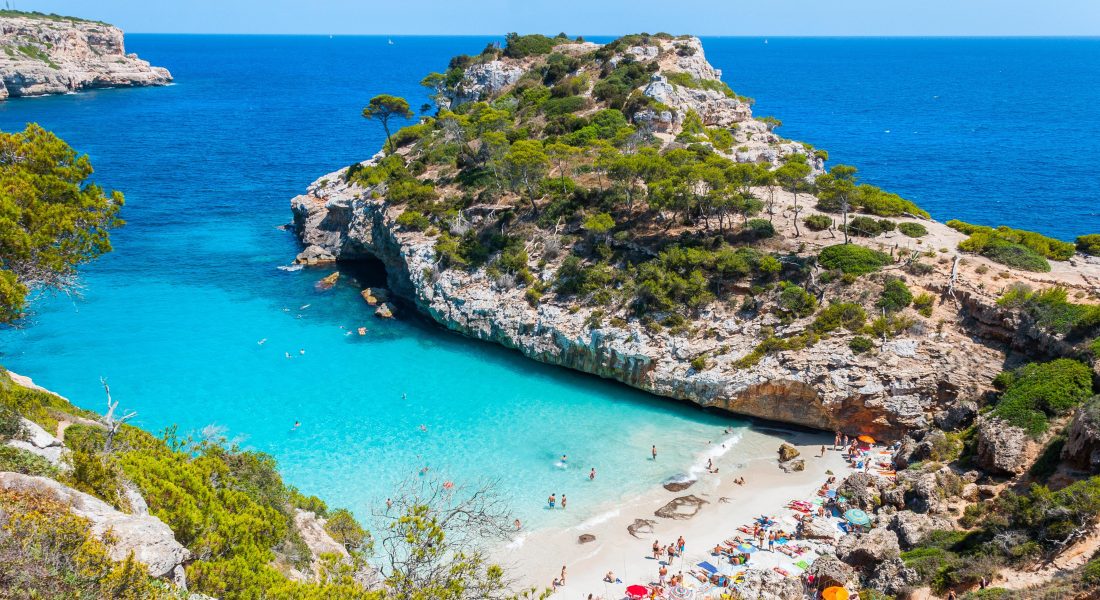
United Kingdom
United Kingdom
Geography
Area: 243,000 sq. km. (93,000 sq. mi.); slightly smaller than Oregon. Cities: Capital–London (metropolitan pop. about 7.56 million). Other cities–Birmingham, Glasgow, Leeds, Sheffield, Liverpool, Bradford, Manchester, Edinburgh, Bristol, Belfast.
Terrain: 30% arable, 50% meadow and pasture, 12% waste or urban, 7% forested, 1% inland water.
Land use: 25% arable, 46% meadows and pastures, 10% forests and woodland, 19% other.
Climate: Generally mild and temperate; weather is subject to frequent changes but to few extremes of temperature.
 |
People
The United Kingdom’s population in 2004 surpassed 60 million–the third-largest in the European Union. Its overall population density is one of the highest in the world. Almost one-third of the population lives in England’s prosperous and fertile southeast and is predominantly urban and suburban–with about 7.5 million in the capital of London, which remains the largest city in Europe. The United Kingdom’s high literacy rate (99%) is attributable to universal public education introduced for the primary level in 1870 and secondary level in 1900. Education is mandatory from ages 5 through 16. The Church of England and the Church of Scotland are the official churches in their respective parts of the country, but most religions found in the world are represented in the United Kingdom.
Economy
GDP (at current market prices, 2009): $2.184 trillion. Annual growth rate (2009): -4.8%.
Per capita GDP (at current market prices, 2009): $35,334. Natural resources: Coal, oil, natural gas, tin, limestone, iron ore, salt, clay, chalk, gypsum, lead, silica.
Agriculture (1.2% of GDP): Products–cereals, oilseed, potatoes, vegetables, cattle, sheep, poultry, fish.
Industry: Types–steel, heavy engineering and metal manufacturing, textiles, motor vehicles and aircraft, construction (23.8% of GDP), electronics, chemicals.
Services (75% of GDP): Types–financial, business, distribution, transport, communication, hotels.
Trade (2009): Exports of goods and services–$351.3 billion: manufactured goods, fuels, chemicals; food, beverages, tobacco. Major markets–U.S., European Union. Imports of goods and services–$473.6 billion: manufactured goods, machinery, fuels, foodstuffs. Major suppliers–U.S., European Union, and China.
HISTORY
The Roman invasion of Britain in 55 BC and most of Britain’s subsequent incorporation into the Roman Empire stimulated development and brought more active contacts with the rest of Europe. As Rome’s strength declined, the country again was exposed to invasion–including the pivotal incursions of the Angles, Saxons, and Jutes in the fifth and sixth centuries AD–up to the Norman conquest in 1066. Norman rule effectively ensured Britain’s safety from further intrusions; certain institutions, which remain characteristic of Britain, could develop. Among these are a political, administrative, cultural, and economic center in London; a separate but established church; a system of common law; distinctive and distinguished university education; and representative government.
Union
Both Wales and Scotland were independent kingdoms that resisted English rule. The English conquest of Wales succeeded in 1282 under Edward I, and the Statute of Rhuddlan established English rule 2 years later. To appease the Welsh, Edward’s son (later Edward II), who had been born in Wales, was made Prince of Wales in 1301. The tradition of bestowing this title on the eldest son of the British Monarch continues today. An act of 1536 completed the political and administrative union of England and Wales.
While maintaining separate parliaments, England and Scotland were ruled under one crown beginning in 1603, when James VI of Scotland succeeded his cousin Elizabeth I as James I of England. In the ensuing 100 years, strong religious and political differences divided the kingdoms. Finally, in 1707, England and Scotland were unified as Great Britain, sharing a single Parliament at Westminster.
Ireland’s invasion by the Anglo-Normans in 1170 led to centuries of strife. Successive English kings sought to conquer Ireland. In the early 17th century, large-scale settlement of the north from Scotland and England began. After its defeat, Ireland was subjected, with varying degrees of success, to control and regulation by Britain.
The legislative union of Great Britain and Ireland was completed on January 1, 1801, under the name of the United Kingdom. However, armed struggle for independence continued sporadically into the 20th century. The Anglo-Irish Treaty of 1921 established the Irish Free State, which subsequently left the Commonwealth and became a republic after World War II. Six northern, predominantly Protestant, Irish counties have remained part of the United Kingdom.
British Expansion and Empire
Begun initially to support William the Conqueror’s (c. 1029-1087) holdings in France, Britain’s policy of active involvement in continental European affairs endured for several hundred years. By the end of the 14th century, foreign trade, originally based on wool exports to Europe, had emerged as a cornerstone of national policy.
The foundations of sea power were gradually laid to protect English trade and open up new routes. Defeat of the Spanish Armada in 1588 firmly established England as a major sea power. Thereafter, its interests outside Europe grew steadily. Attracted by the spice trade, English mercantile interests spread first to the Far East. In search of an alternate route to the Spice Islands, John Cabot reached the North American continent in 1498. Sir Walter Raleigh organized the first, short-lived colony in Virginia in 1584, and permanent English settlement began in 1607 at Jamestown, Virginia. During the next two centuries, Britain extended its influence abroad and consolidated its political development at home.
Great Britain’s industrial revolution greatly strengthened its ability to oppose Napoleonic France. By the end of the Napoleonic Wars in 1815, the United Kingdom was the foremost European power, and its navy ruled the seas. Peace in Europe allowed the British to focus their interests on more remote parts of the world, and, during this period, the British Empire reached its zenith. British colonial expansion reached its height largely during the reign of Queen Victoria (1837-1901). Queen Victoria’s reign witnessed the spread of British technology, commerce, language, and government throughout the British Empire, which, at its greatest extent, encompassed roughly one-fifth to one-quarter of the world’s area and population. British colonies contributed to the United Kingdom’s extraordinary economic growth and strengthened its voice in world affairs. Even as the United Kingdom extended its imperial reach overseas, it continued to develop and broaden its democratic institutions at home.
GOVERNMENT
The United Kingdom does not have a written constitution. The equivalent body of law is based on statute, common law, and “traditional rights.” Changes may come about formally through new acts of Parliament, informally through the acceptance of new practices and usage, or by judicial precedents. Although Parliament has the theoretical power to make or repeal any law, in actual practice the weight of 700 years of tradition restrains arbitrary actions.
Executive power rests nominally with the monarch but actually is exercised by a committee of ministers (cabinet) traditionally selected from among the members of the House of Commons and, to a lesser extent, the House of Lords. The prime minister is normally the leader of the largest party in the Commons, and the government is dependent on its support.
Parliament represents the entire country. It legislates for the entire country in matters that are not devolved to the legislatures in Scotland, Wales, and Northern Ireland, such as foreign policy, energy policy, immigration and border control, and monetary policy. The devolved legislatures in Scotland, Northern Ireland, and Wales have varying degrees of legislative authority over other matters. England does not have its own separate legislative body and Parliament can therefore legislate in all fields for England. As of May 2010, the maximum parliamentary term was 5 years, and the prime minister could ask the monarch to dissolve Parliament and call a general election at any time. Following the May 6, 2010 election, however, the newly-formed Conservative-Liberal Democrat coalition government announced plans to institute fixed 5-year Parliament terms, in which the only way to remove a government between elections would be a vote of no confidence with the support of 55% of members of Parliament (MPs).
This proposed legislation has not yet been enacted. The focus of legislative power is the 650-member House of Commons, which has sole jurisdiction over finance. The House of Lords, although shorn of most of its powers, can still review, amend, or delay temporarily any bills except those relating to the budget. The House of Lords has more time than the House of Commons to pursue one of its more important functions–debating public issues. In 1999, the government removed the automatic right of hereditary peers to hold seats in the House of Lords. The current house consists of appointed life peers who hold their seats for life and 92 hereditary peers who will hold their seats only until final reforms have been agreed upon and implemented. The judiciary is independent of the legislative and executive branches but cannot review the constitutionality of legislation.
U.S.-UNITED KINGDOM RELATIONS
The United Kingdom is one of the United States’ closest allies, and British foreign policy emphasizes close coordination with the United States. Bilateral cooperation reflects the common language, ideals, and democratic practices of the two nations. Relations were strengthened by the United Kingdom’s alliance with the United States during both World Wars, and its role as a founding member of NATO, in the Korean conflict, in the Persian Gulf War, and in Operation Iraqi Freedom. The United Kingdom and the United States continually consult on foreign policy issues and global problems and share major foreign and security policy objectives.
The United Kingdom is the sixth-largest market for U.S. goods exports after Canada, Mexico, China, Japan, and Germany, and the sixth-largest supplier of U.S. imports after Canada, China, Mexico, Japan, and Germany. U.S. exports of goods and services to the United Kingdom in 2009 totaled $99.076 billion, while U.S. imports from the U.K. totaled $86.034 billion. The United Kingdom is a large source of foreign tourists in the United States. In 2008, 2.83 million U.S. residents visited the United Kingdom, while 3.15 million U.K. residents visited the United States.
The United States and the United Kingdom share the world’s largest foreign direct investment partnership. U.S. investment in the United Kingdom reached $421 billion in 2008, while U.K. direct investment in the U.S. totaled $454 billion. This investment sustains more than 1 million American jobs.
TRAVEL AND BUSINESS INFORMATION
The U.S. Department of State’s Consular Information Program advises Americans traveling and residing abroad through Country Specific Information, Travel Alerts, and Travel Warnings. Country Specific Information exists for all countries and includes information on entry and exit requirements, currency regulations, health conditions, safety and security, crime, political disturbances, and the addresses of the U.S. embassies and consulates abroad. Travel Alerts are issued to disseminate information quickly about terrorist threats and other relatively short-term conditions overseas that pose significant risks to the security of American travelers. Travel Warnings are issued when the State Department recommends that Americans avoid travel to a certain country because the situation is dangerous or unstable.
Day 1-3: London
Any trip to England would not be the same without hitting the capital city of London. With only three days, you’ll need to be savvy with what you cram in, but it’s easy to see the likes of Big Ben, the London Eye, Houses of Parliament and Buckingham Palace in one day. For a more tranquil spot of sightseeing, head towards Hyde Park, Victoria Park or Primrose Hill for stunning scenery and with the latter, unrivaled views of the big smoke. If you have time, the trendy areas of Camden and Shoreditch are also a must.London Eye and London Aquarium side-by-side © Yogendra Joshi/Flickr
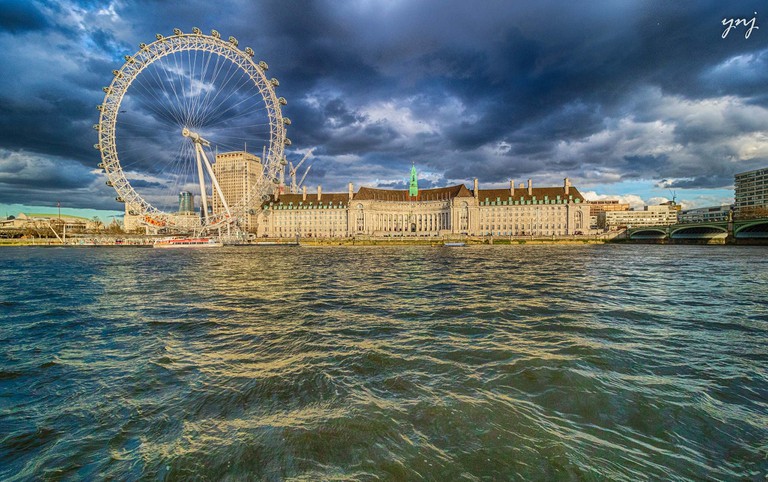
Day 4: Brighton
There’s nothing like grabbing an ice cream and walking along an English coastline. Just a couple of hours from London is Brighton, one of the country’s finest. Fish and chips on the pier is one of the more quintessentially English things you could do on your trip to Brighton, so make sure you do!Sunset at Brighton Pier © valcker/Flickr
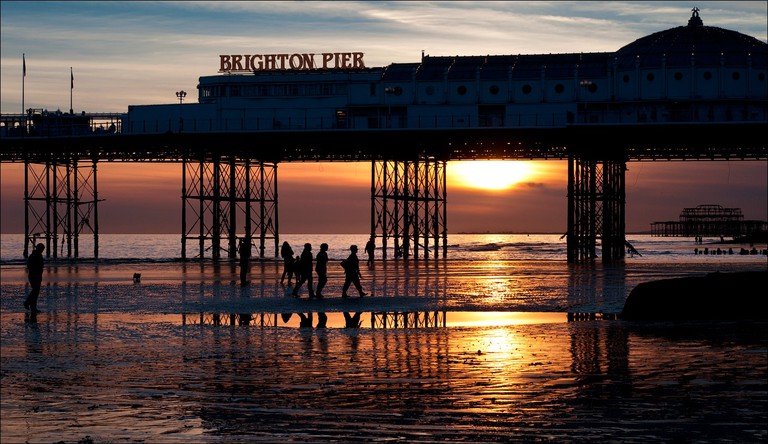
Day 5: Oxford
Oxford is one of the smaller cities in the country, but world renowned for its prestigious university. Arguably one of the most sought after cities in England, Oxford boasts architecture from every period since the Saxons and is one of our top picks for a day out. Make sure you visit Magdalen Bridge Boathouse to hire a traditional Oxford punt and kick back on the River Cherwell!Radcliffe Camera, Oxford © Tejvan Pettinger/Flickr

Day 6-7: The Cotswolds
Now you’ve done some cities, how about some peace and quiet? The Cotswolds is one of the country’s most spectacular areas and spans across more than 800 square miles in five counties. Quintessentially English villages are rife here, with plentiful options for B&Bs, spas and even camping under the stars.Upper Slaughter, The Cotswolds © Andy Sim/Flickr
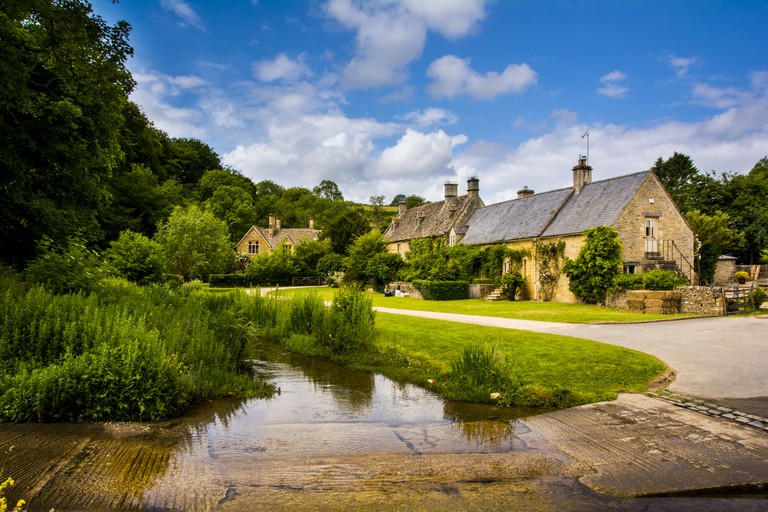
Day 8: Stratford-upon-Avon
A visit to England wouldn’t be complete without a trip to Stratford-upon-Avon, the home of England’s most famous bard – arguably the greatest poet to ever live – William Shakespeare. At this picturesque area in central England, you’ll be able to watch plays of Hamlet and Romeo & Juliet at the Royal Shakespeare Company, as well as visiting Shakespeare’s Family Home, a restored 16th century timber frame house. On a nice day, renting a pedalo on the River Avon is highly recommended.The Falcon, Stratford-upon-Avon © Ed Webster/Flickr

Day 9-10: Birmingham
This canal hub in the most central area of the country is worth visiting for its hidden qualities alone and with a population of more than 1.1 million diverse people, it’s a cultural hub too. With some of the finest restaurants and renowned chefs in the country serving anything from pan-Asian and Indian through to Syrian and Jamaican cuisine, food is a pretty big deal here. And for afters? Cadbury chocolate was born in the leafy suburb of Bournville, with factory tours operating daily. Birmingham is big on sport too, with the likes of Villa Park and Edgbaston Cricket Ground attracting tens of thousands of people on a regular basis.Narrowboats in Birmingham © Neil Howard/Flickr
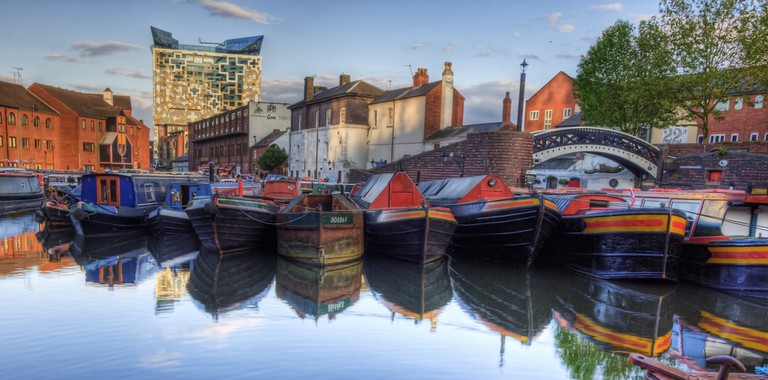
Day 11-12: Liverpool
Roll up, to the magical mystery tour! Music fans should make a point of visiting Liverpool, one of the most musically revered cities in the world. Not only were The Beatles from Liverpool, but Cilla Black, The La’s and Gerry & The Pacemakers have provided inspiration to a whole host of new talent emerging from the city. Furthermore, visitors should flock to the Albert Dock, a stunning centre piece of Liverpool’s UNESCO World Heritage Site and home to some of the city’s best bars, restaurants and museums.Bird’s eye view of Albert Dock © albertdock.com
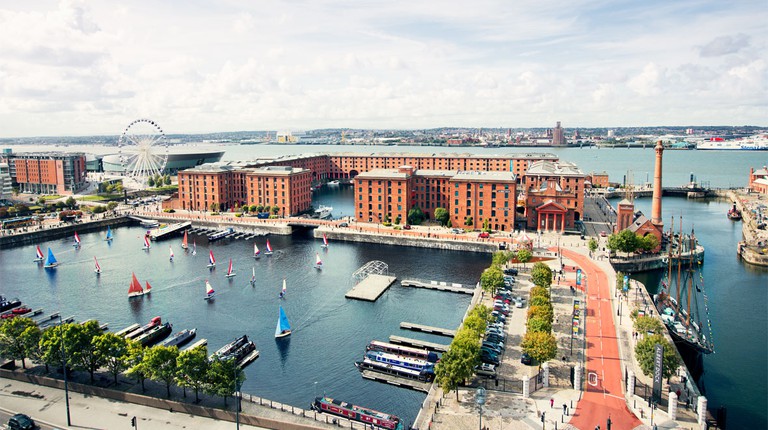
Day 13-14: Manchester
Your two-week trip to England ends in one of the country’s most-visited cities, Manchester. World famous for its sport, Manchester offers two high-flying Premier League teams and the National Football Museum too. Football not your thing? Not to worry – there’s the Imperial War Museum, The Trafford Centre and plenty of music venues to catch international touring acts and the next big thing. With a musical heritage as rich as Oasis, Joy Division, The Smiths and The Stone Roses, we couldn’t leave it out, could we?Manchester © keithjustkeith / Flickr
